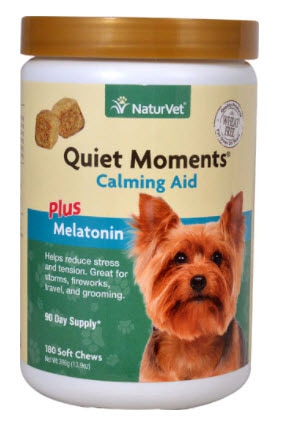Millions of Americans take melatonin supplements to help them sleep. But can you give melatonin to your sleepless Schnauzer? Yes, you typically can, experts say. However, they advise asking your veterinarian before administering melatonin to your Maltipoo.
Zach Reed, founder of GreatDaneCare.com, says melatonin is safe for dogs as long as it doesn’t contain xylitol, a sugar alcohol. Xylitol can be toxic to dogs, triggering low blood sugar, liver failure, seizures or death.
Reed recommends giving a daily dose of 1 to 6 milligrams of melatonin to your pooch, with the amount based on the dog’s weight. Your veterinarian can help you determine the right dosage. Potential side effects of melatonin include drowsiness, fatigue, digestive problems, itching, elevated heart rate and muscle cramping.
Dr. Kyle Burton, founder of Healthy Paws Herbals, cautions that melatonin can become “addicting” for your dog, as it can shut down the body’s ability to make melatonin on its own. As such, he suggests melatonin as a temporary fix for your pup’s sleeplessness. Generally, Burton says, you should discontinue melatonin treatment for your dog after 10 days.
Dr. Georgina Ushi Phillips, a veterinarian in Florida’s Tampa Bay area, says that before you put your dog on a melatonin regimen, you should consult with your veterinarian about the appropriate over-the-counter product and correct dosage. “In many cases, it’s best to start with the lowest dose and monitor your dog’s reaction,” Phillips says.
What if you don’t want to give melatonin to your dog? Experts offer these five tips to help ensure your Rottweiler is well-rested.
1. Set up a calming environment
Phillips says petting or lightly brushing your dog before bedtime may help them relax. You might even play some soft, soothing music. Another relaxation option: Exposing your dog to calming scents like chamomile or lavender.
Krysta Reilly, a veterinary technician in Scottsdale, Arizona, says you might even consider placing a white-noise sound machine near where you dog slumbers.
2. Maintain a routine
Setting up a before-bedtime routine can help your dog enjoy some quality shut-eye.
“Our dogs are very routine-driven, so try to set a regular routine with plenty of signals that your dog knows it’s almost time for bed,” Phillips says. “This could be anything from turning off the lights to brushing your teeth.”
3. Incorporate exercise
To make sure your Terrier is tuckered out and ready to rest, be sure your dog gets plenty of exercise throughout the day, Reed says. A couple of daily walks, for instance, could even enable you to get more exercise and to spend more quality time with your furry friend.
4. Explore herbal alternatives
Burton says valerian root is a safe herbal supplement for dogs that can promote relaxation and sleep. He also recommends a Chinese herbal formula called Chai Hu Long Gu Mu Ling Tang.
Remember to check with your veterinarian before giving your dog any herbal supplements.
5. Look into prescription medication
Reilly says your veterinarian may be able to prescribe medication that helps your dog get to sleep and stay asleep.
“Every dog is different,” she says, “and sleeplessness issues should always be first discussed with your veterinarian to determine what’s best for your pet’s individual circumstance.”
Featured product:


